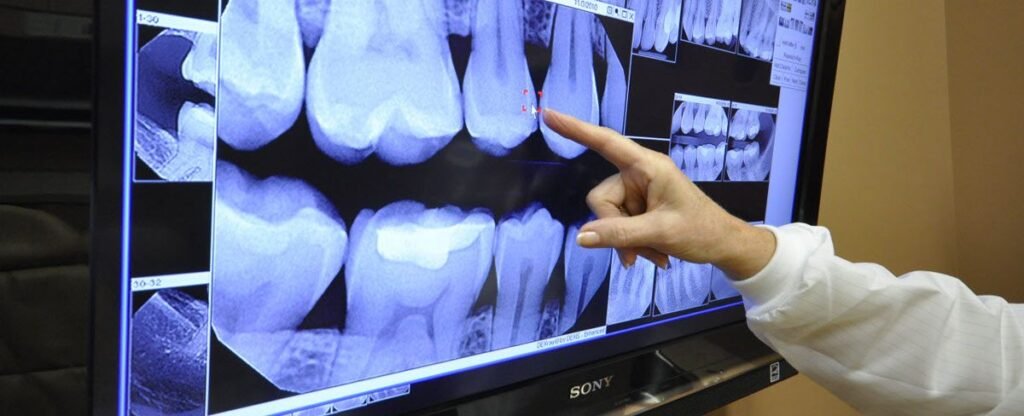Digital X-rays and CBCT

DIGITAL X-RAYS
Digital X-rays and CBCT can help us detect oral health issues, like cavities and gum disease, before they worsen. There are many different types of dental X-rays, including intraoral (taken inside your mouth) and extraoral (taken outside your mouth).
Dental X-rays are essential to proper oral health and maintenance.
At our dental clinic, we proudly use the Digital X-rays and CBCT (Cone Beam CT) imaging machine. This powerful machine can measure scans for infections, determine the best place to position implants, as well as reveal wisdom teeth impactions.
It is an essential and preventive mechanism to effectively diagnose problems and administer necessary treatment to our patients.
WHAT CAN DENTAL X-RAYS REVEAL?
1. Loss of Bone
2. Areas of Infection
3. Abscesses Or Cysts
4. Cancerous And Non-Cancerous Tumors
5. Tooth Decay And Emerging Abnormalities
6. Poor Root And Tooth Positions
7. Problems Inside Tooth Structure
8. Problems Below Gum Line
9. Cavities, especially small areas of decay between teeth
10. Decay beneath existing fillings

ARE DENTAL X-RAYS SAFE?
The digital X-ray is state-of-the-art technology. An electronic sensor captures and stores the digital image on a computer instead of X-ray film.
These images can be instantly viewed and enlarged on a computer, allowing your dentist to detect the problems with greater ease and start treatment immediately. This modern technology also helps in reducing radiation levels by as much as 80-90% compared to traditional dental X-rays.
What are different types of dental X-rays?
There are two main types of dental X-rays:
- Intraoral: The film or sensor is inside your mouth
- Extraoral: The film or sensor is outside your mouth
How are dental X-rays done?
Before an X-ray is taken, a technician will place a lead apron over your chest and a thyroid collar around your neck to protect you from excess radiation. You will either sit in a chair or stand in front of the X-ray machine and the technician will place the film or sensor.
Once this is done, the technician will press a button to take the X-ray image. It is important to remain as still as possible during the process.
Benefits of Digital dental X-rays
A. Enhanced Images: These x-rays are captured using digital sensors instead of the traditional x-ray film. These sensors produce quality images that are saved onto the computer. High resolution and accuracy means that more information is available for the dentist to use.
B. Enlargement Options: When you are looking at a traditional x-ray film, the image can only be viewed at actual size. Digital images can be enlarged, giving the dentist the option to zoom in on potential problems.
C. Reduced Radiation: Researchers have found that the radiation levels are reduced by up to 70% compared to traditional x-ray equipment. Lowering the radiation helps to decrease the potential side effects and long-term risk of x-ray exposure.
D. Electronic Storage: The dental office can keep these files in storage indefinitely. Instead of having stacks of paperwork and files, digital images can be kept securely in the cloud for future reference as needed.
E. Saves Time and Money: Early detection methods using digital x-rays help to minimize the treatments that are required. As a result, patients can save both time and money by avoiding more invasive treatments.
